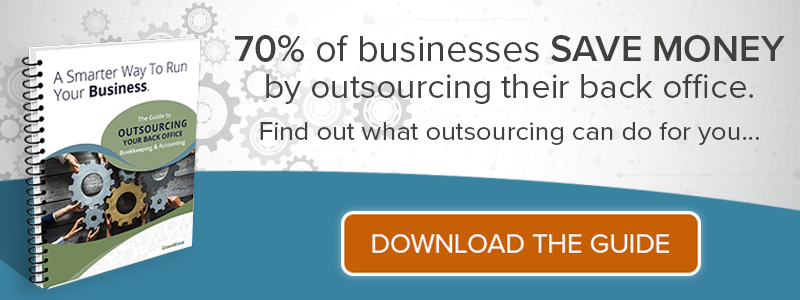5 min read 

Key Takeaways
|
The secret to profitability is two-fold: the companies that are the most profitable have both a Human Capital Strategy and Financial Management Strategy.
Building a high performing team helps you to maximize profitability and enables your business reach a new level of success.
When you have high performing teams and are using your numbers to gain insight into what is going on in your business, you'll be able to see how your people drive profit. The result on your bottom line is profound.
9 out of 10 CFOs(1) found that improving company culture would increase their business' value and performance. Employee engagement and teamwork should be a focus area in every company culture strategy.
Employee Engagement
What does a fully “engaged employee" look like? It’s more than a “happy” worker...
An engaged employee demonstrates an emotional commitment to their organization. They strive to contribute to the organization’s success. They work to the best of their ability to reach their company's goals and be a part of a successful team.
Only 15% of employees worldwide(2) are engaged in the workplace.
Employee engagement should be a critical component of every business strategy. It goes beyond the emotional and intangible aspects of employees attitudes. In fact, employee engagement has a very real impact on business success and profitability.
Organizations that scored the highest on an employee engagement study(3) showed 21% higher levels of profitability.
On top of that, in the U.S. alone, disengaged employees cost organizations around $450-550 billion each year(4).
Role Fit
One of the biggest drivers of employee engagement is teamwork.
19,000 worldwide workers found(5) that employees who reported they felt a “strong sense of teamwork” described themselves as “fully engaged”.
Team participation plays a critical role in employee engagement.
So, where do you start in building a high performing team?
The first area to focus on is the role fit. It is important employees feel their work provides value to the organization as a whole. Encourage employees to focus on developing their role where they feel the most passionate. Set them up for success by having the best resources and tools available so they can perform to the best of their ability.
Give employees the opportunity to grow and move into a big role in the company. Try to find different ways for them to grow.
Develop a culture that reinforces the important role each employee plays within their organization. It’s important to connect the employees’ role to your company's mission, encourage collaboration, and recognizing & rewarding accordingly.
Do your employees know their contributions to your business are meaningful?
Written Goals
If you are trying to grow and scale your business, written goals should be a key component in your strategy.
Written goals provide a way to tie an employee’s performance to company goals that are driven by measurable objectives—revenue, profit, and client satisfaction—and providing positive feedback for achievements in the form of recognition and rewards.
The Manager's Role
You’ve heard it before: employees join companies and quit managers.
The adage rings true: 70% of the variance in team engagement(6) is directly determined by the manager.
Team leaders cultivate trust.
Almost 1 in 3 employees don’t trust their employer (7). This is the root of a lot of workplace issues. Why? Employees who trust their team leader are 12x more likely to be engaged (8) . Recognizing quality work means team members may experience greater emotional loyalty with one another.
Day-to-day connections greatly affect employee experiences. Give employees the opportunity to strengthen workplace relationships through team celebrations or non-work related events.
Encourage Peer Learning. Peer-to-peer learning is one of the best approaches to team-building, and can be a powerful development tool. Not only does this tap into the expertise that already exists in your organization, it also helps employees learn leadership skills in a lower-stakes environment.
Communication Strategy
Your internal communication strategy is a critical component of your company culture. It is the groundwork for an engaging environment.
Successful organizations have detailed communication strategies. When a company has a strong internal communications strategy, employees feel more secure and comfortable. As a result, they are more motivated to achieve the company's goals.
The purpose of a communication strategy is to establish a clear guide for consistently communicating with employees. This will help employees feel more connected and fully informed of your organization’s goals.
Here are 3 things to consider when creating your communication strategy...
1. Include ALL Employees: Communication should not be one way. From C-level executives to entry level employees, there needs to be an established method of communication.
2. The Right Channel: A key component in an internal communication strategy is choosing the right channel with which to communicate with employees (email, instant message, phone, etc.)
3. Consistent Content: Make sure you are communicating with and updating employees on a regular basis.
It’s easier to develop a tight communication strategy after you adopt a VoIP service, like Line2, but that specific provider may not suit your business. If you need help choosing a VoIP provider that’s similar to Line2, take a look at OpenPhone’s comparison article.Keeping Employees Engaged Remotely
The organizations that have built a strong remote workforce are those who have put a heavy emphasis on internal communication and support.
With a remote work environment, it is important to make sure your employees feel connected with their colleagues.
Create the time. Whether it's on video call or you're in the office part time, make the time to continue to enjoy the things that are important to your company culture. Schedule 1 on 1 meetings with your team members to continue to foster open communication.
Your People First
Your people are your biggest asset.
“At GrowthForce, our belief is if you treat your employees with true dignity & respect- encourage them, mentor them, and let them know how important they are to the organization, the end result is a waterfall effect. Guess who gets served? The client. They get top-notch service because the teams feel confident that their work is going to serve the client well.”
- Loretta Mormino, GrowthForce COO
Focus on the people first, and they in turn will give the clients what they need. You’ll get top notch customer service, and you’ll get a group of people who are committed to helping the organization be better.
Sources
(1) National Bureau of Economic™ Research Survey
(2) Gallup™ State of the Global Workplace Study
(3) ADP™ Research Institute Survey
(4) The Conference Board The Engagement Institute™ Research
(5) Gallup™ Meta-Analysis Study
(6) Gallup™ Employee Engagement Study
(7) Edelman™Trust Barometer Report
(8) ADP The Global Study of Engagement Technical Report

.png?width=563&height=144&name=New%20GF%20Logo%20(37).png)
